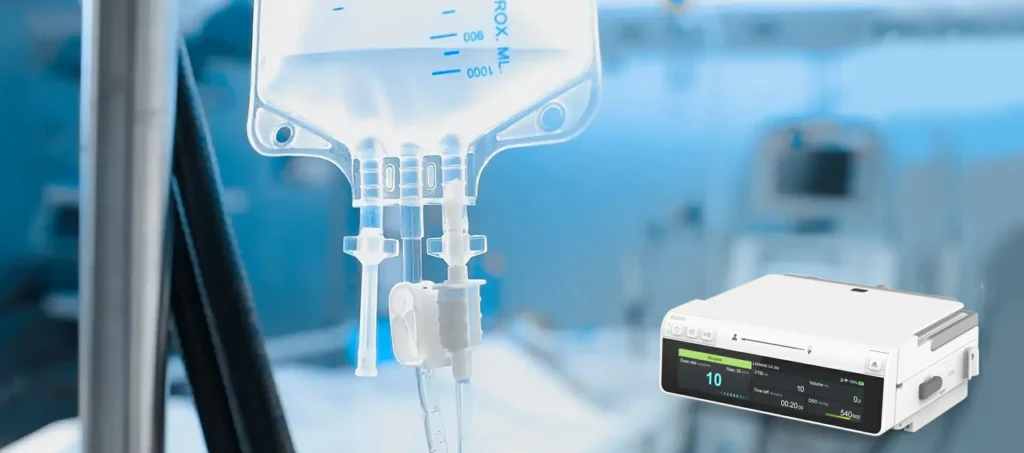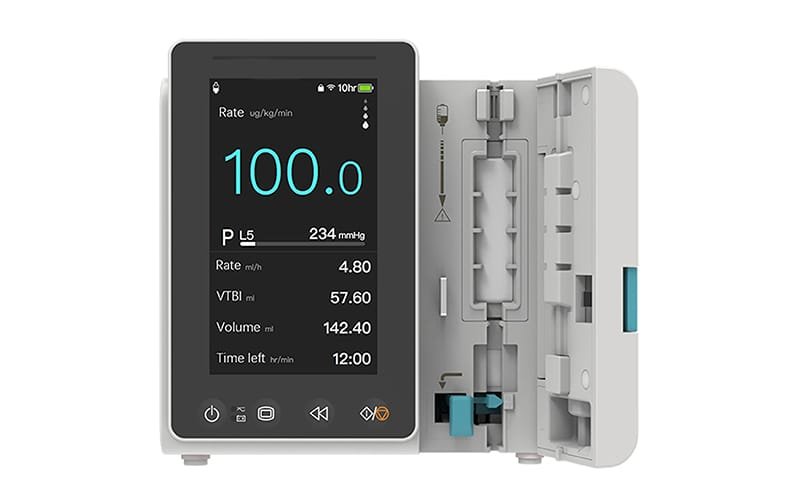Introduction
Infusion pumps are indispensable in modern medical settings, providing accurate and consistent delivery of fluids, medications, and nutrients into patients’ bodies. Whether used in hospitals, clinics, or home care environments, selecting the right infusion pump requires understanding its functionality, technical features, types, safety protocols, and regulatory compliance. For procurement professionals, this guide offers a comprehensive roadmap for sourcing the most suitable infusion pump for their facility.

What Is an Infusion Pump?
An infusion pump is a medical device designed to deliver fluids—such as nutrients, medications, or hormones—into a patient’s circulatory system in controlled amounts. These devices are essential in situations that require precise, consistent delivery over a set period, such as:
- Chemotherapy
- Pain management
- Antibiotic therapy
- Parenteral nutrition
- Neonatal and pediatric intensive care
- Cardiac care and post-operative recovery
Common Types of Infusion Pumps
1. Volumetric Infusion Pumps
Deliver large volumes of fluid with a consistent, preset flow rate. Ideal for standard hospital use.
Use Case: Hydration therapy, parenteral nutrition, general IV fluid administration.
2. Syringe Pumps
Highly precise and suitable for low-volume infusions. Frequently used in intensive care units (ICUs), neonatal units, and during anesthesia.
Use Case: Insulin, inotropes, vasoactive drugs, pediatric medication.
3. PCA (Patient-Controlled Analgesia) Pumps
Allow patients to self-administer a controlled dose of pain relief medication, typically opioids.
Use Case: Post-surgical recovery, chronic pain management.
4. Ambulatory Pumps
Lightweight, battery-powered, and wearable—ideal for outpatient or home care.
Use Case: Long-term antibiotic therapy, chemotherapy at home.
5. Multi-Channel Infusion Pumps
Capable of delivering multiple medications or fluids simultaneously through separate channels.
Use Case: Complex ICU treatments involving concurrent drug therapies.
Key Features to Consider Before Purchasing
1. Accuracy and Flow Control
Precise infusion rates are critical, especially for high-risk medications. Pumps should support micro-infusion and have fine flow rate adjustments.
2. Programmability
Modern pumps should allow for custom programming of dosage, timing, and duration. Smart infusion pumps also include a drug library and dosage error reduction system (DERS).
3. Alarm and Safety Features
Built-in alarms for occlusion, empty reservoirs, air bubbles, low battery, and misprogramming are vital for patient safety.
4. Compatibility and Versatility
Ensure compatibility with standard IV tubing, syringes, and drug bags. Modular systems are ideal for facilities managing diverse treatment protocols.
5. Battery Life and Power Supply
Long-lasting battery support is essential, especially in ambulatory and emergency settings. Dual power options offer added flexibility.
6. Ease of Cleaning and Maintenance
Medical-grade pumps should have surfaces that are easy to disinfect and be built with minimal maintenance needs.
Regulatory Compliance
Infusion pumps should meet international standards for quality, safety, and performance:
- FDA 510(k) clearance for U.S. use
- CE Mark for the European market
- ISO 13485 (Quality Management)
- IEC 60601-2-24 (Particular requirements for infusion pumps)
Cost Considerations and Lifecycle Management
- Compare initial costs, long-term service fees, and spare parts availability.
- Evaluate warranty and technical support terms.
- Plan for training costs for nursing and clinical staff.
Recommended Product Page
Conclusion
A well-chosen infusion pump supports effective therapy delivery, minimizes clinical risks, and streamlines healthcare workflows. By understanding the different types, comparing features, and verifying regulatory compliance, buyers can confidently source the right equipment for their facilities.
📩 Need assistance or technical specs? Contact CNMEDITECH for tailored procurement support.

